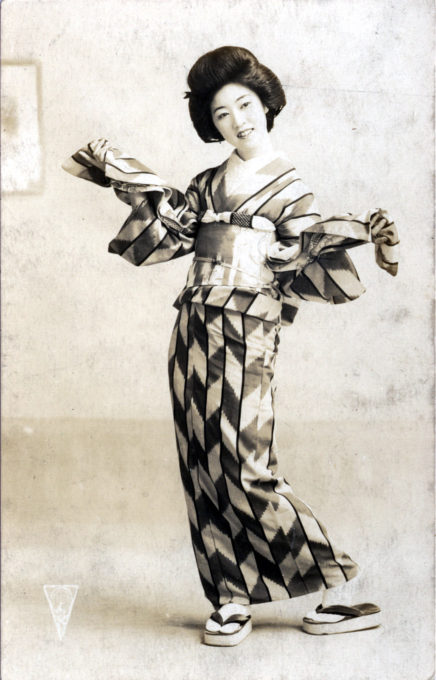See also:
Kimono fashion, c. 1910
Teruha, the nine-fingered geisha, c. 1910
Laundry girls, c. 1910
Shikomi with pail and brush, c. 1910
“As to the modern geisha, she is not, as Europeans think, merely a pretty waitress in a tea house, who makes dancing an excuse for displaying her beauty; she is, above all, an artist in the best sense of the word.
“For the technical skill required for the geisha dances is only acquired by long years of patient practice and study, and at an early age, when she is but seven or eight years old, the child who later will become a dancer is sent to a house where she learns various accomplishments. She is taught singing and poetry, besides dancing, and after years of hard work she becomes a full-fledged geisha, ready to charm all with her artistic accomplishments, her winning smile, and her gracious manner.
“And as she performs her pantomimic dances, one sees that the geisha, like her ancestor the Shirabyoshi [court dancers of the Heian and early Kamakura periods], has as much intelligence as she has grace of body and skill of hand and foot.
“Every movement is suggestive, every gesture expressive. The turn of the head, the glances, the hands – the slender mobile hands – are exquisite poems in themselves; poems which in a few movements will express more than all the jerky, dislocated acrobatics of our Occidental stage.”
– The Japanese Dance, by Marcelle Azra Hincks, 1910


